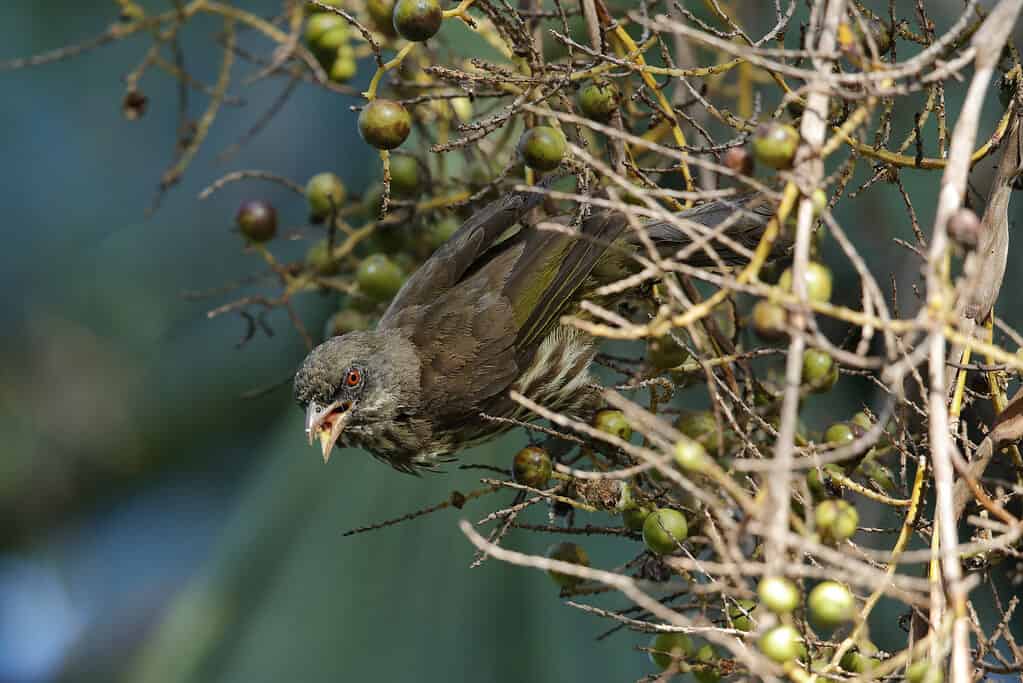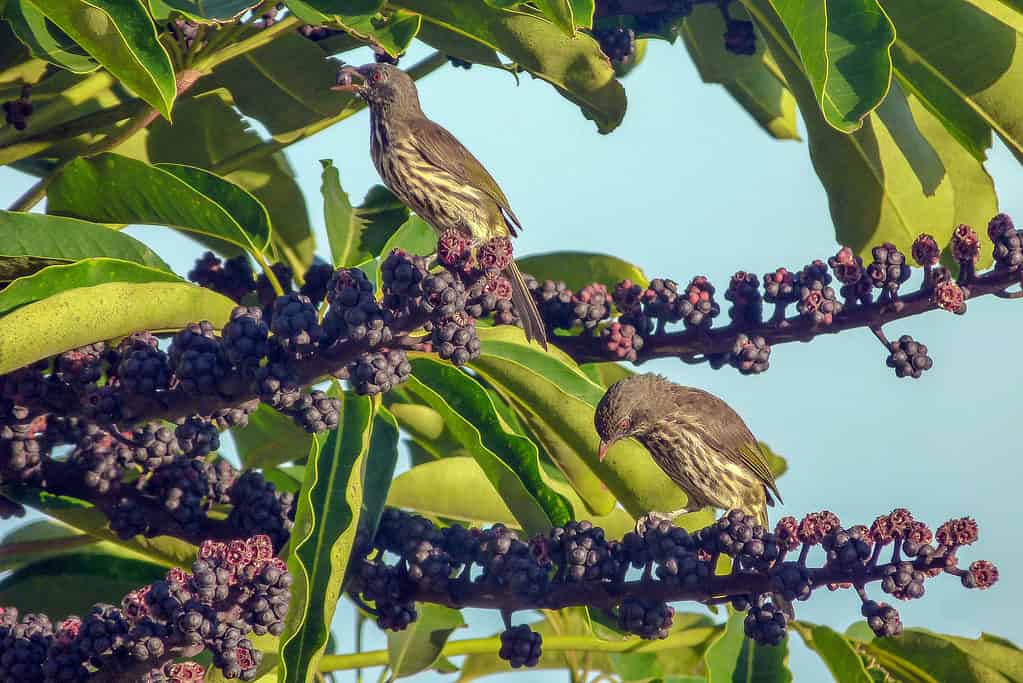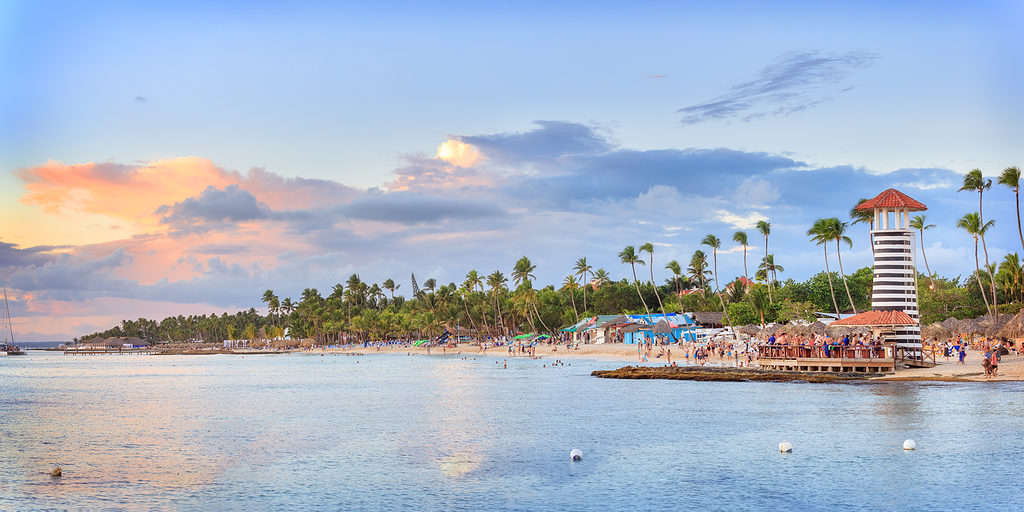Dominican Republic is an island country located in the Caribbean Sea. It occupies two-thirds of the island of Hispaniola with Haiti occupying the other third. The country is one of the most biodiverse countries in the world with five distinct ecosystems. There are wetlands, dry forest, broadleaf forest, dunes, savannah and nearly 900 miles of coastline. You can imagine the variation in wildlife found throughout the country especially the number of bird species. With so many stunning birds how does a nation choose just one as their national bird? Read on to find out all about the national bird of the Dominican Republic!
What is the National Bird of Dominican Republic?
The national bird of Dominican Republic is the palmchat. The palmchat are noisy social birds that can be found throughout the island in very visible, large nests. Groups of 20-30 pairs of palmchats hang out in sprawling twig nests in the top of palm trees and telephone poles. They are commonly found near humans, in city parks and gardens. If you stand near a nest of palmchats be ready to hear a loud chattering with varied chirps, clucks and squawks. They are impressively loud for their size!

The national bird of Dominican Republic is the palmchat.
©iStock.com/Bebedi
What is a Palmchat?
Palmchat are passerine birds (perching birds) that are about 8 inches long. They are only found on the island of Hispaniola, spread out across Dominican Republic and Haiti. These birds are dark brown with a brown streaked cream chest. The edges of their wings and a patch on their tail feathers are olive-green. They have short dull-yellow beaks that are slightly curved.
How Big are Palmchat Nests?
Palmchat nests can get to be 6 ½ feet wide! Groups of palmchat work together to build one massive nest that has individual nests for each pair. Throughout the year they add new branches to the nest to maintain it. They prefer to nest in palm trees but will make do with telephone poles, electrical boxes or other tall structures. Anywhere on the island they can find berries and flowers, their main diet, is suitable habitat.

The main diet of palmchat birds consists of berries.
©iStock.com/mirjana simeunovich
Is the National Bird of Dominican Republic on the Flag?
No. The flag of the Dominican Republic does not feature the national bird, but it does have the coat of arms centered on the flag. The flag is red, white and blue with white cross stripes and each corner of the flag either red or blue. The coat of arms has a shield with the flag in the background and a Bible in the center. Above the Bible is a gold cross and six gold spears. The national moto is on a blue banner above the shield, Dios, Patria, Libertad (God, Homeland, Liberty). Although there are no birds or animals on the flag there are two symbols of flora with a branch from a bay tree on the left and a palm frond on the right.
Is the Palmchat Featured on the Money of Dominican Republic?
No. The money of the Dominican Republic is the Dominican peso and the banknotes feature prominent people and famous places in the country. The coins feature either the coat of arms, a palm, famous people or a crowned Indian head depending on the series and year of circulation.
Are Palmchats Endangered Animals?
No, palmchats are not endangered animals. According to the IUCN the palmchat is listed as an animal of “Least Concern”. You may think that because they only live on one island in the world that they would be endangered, but they have a healthy breeding population and their population trend is considered to be stable.
Are there any Endangered Animals that live in Dominican Republic?
Yes, there are a few species of animals that are endangered in the Dominican Republic including:
- Cuvier’s Hutia: a foot-long rodent that looks much like a giant rat, lives in the forests
- Dominican Least Gecko: a tan lizard that can only be found in the DR in Sierra Martin Garcia
- Hispaniolan Rhinoceros Iguana: a large lizard that can get to be 24-54 inches long, that’s 4 ½ feet!), they get their name from the rhinocerous-like horn on their head
- Bay-breasted Cuckoo: maroon breasted cuckoo with an large black and white marked tail
What other Animals Live in Dominican Republic?
Other animals that live in the Dominican Republic include a wide range of birds, lizards, snakes, frogs and iguanas. There are a few mammal species but very few when compared to the birds, reptiles and amphibians. Of course the waters off the shore are teeming with a variety of marine mammals, crustaceans and sea turtles. Here are a few of the animals that live in the Dominican Republic:
- The Hispaniolan Woodpecker: These woodpeckers have a unique coloration with black and yellow striped wings, a bright red crown and yellow eye.
- Guaraguao: This bird of prey has a wing span of 5 feet and can swoop down and grab its prey with precision. In North America it is called the red-tailed hawk.
- Hispaniolan Solenodon: These are large, burrowing shrews that have an unusually long snout.
- American crocodile: Be aware that they do live in Lake Enriquillo, which is the largest lake in the Dominican Republic.
- Sooty-mustached bats: These furry bats can be found in the Dominican Republic, Haiti, Cuba, Jamaica and Puerto Rico.
- Hispaniolan Vine Boa (Chilabothrus ampelophis): This Hispaniolan vine boa is a newly discovered species, found in the Dominican Republic by researchers in 2020. The researchers knew they were on to something because of how small these boas were. The largest one they found was less than a meter (3.28 feet).
What Animals Live off the Coast of Dominican Republic?
Off the coast of the Dominican Republic you can find enormous humpback whales that come to Los Haitises National Park on the northeastern edge of the country for breeding. The coral reefs in Monte Criti’s Subaquatic National Park have one of the longest stretches of coral reef but there are multiple sites for snorkeling or diving. You most likely will see clown fish and angle fish and might come across an eagle ray or sea turtle. Bayahibe Beach is a popular spot for diving as well, with two shipwrecks that attract a variety of sea life.
There are sharks off the coast of the Dominican Republic but it is rare to see one from shore and shark attacks are even rarer. The most common shark is the nurse shark but there have also been sightings of bull sharks, hammerhead, reef sharks and whale sharks.

Bayahibe beach is a popular spot for diving in the Dominican Republic.
©Lena Serditova/Shutterstock.com
What is the National Animal of the Dominican Republic?
There is not an official national animal of the Dominican Republic but the palm stork (Dolus dominicus) and the Hispaniolan hutia (Plagiodontia aedium) are two recognized native animals of the country. The palm stork is featured on the shield of the city of Santo Domingo and the Hispaniolan hutia is one of the only land mammals that are native to the country. The palmchat is also sometimes considered the national animal and the national bird. You can understand why this popular social bird is the national bird of Dominican Republic.
Up Next
- The 9 Most Crocodile Infested Lakes in the Americas
- The Top 10 Incredible Animals that Live in Coral Reefs
- Every Flag in the World: Photos, History and More
The photo featured at the top of this post is © iStock.com/Bebedi
Thank you for reading! Have some feedback for us? Contact the AZ Animals editorial team.






